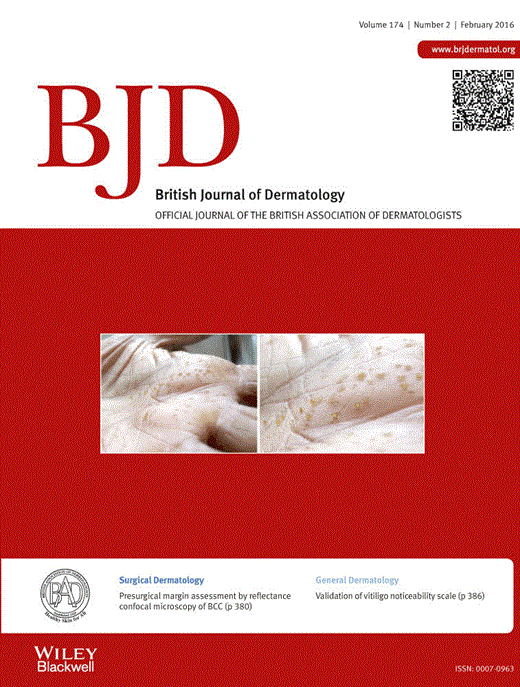-
Views
-
Cite
Cite
P. Tschandl, A.S. Berghoff, M. Preusser, J. Pammer, H. Pehamberger, H. Kittler, Impact of oncogenic BRAF mutations and p16 expression on the growth rate of early melanomas and naevi in vivo, British Journal of Dermatology, Volume 174, Issue 2, 1 February 2016, Pages 364–370, https://doi.org/10.1111/bjd.14323
Close - Share Icon Share
Summary
It is important to know what drives and arrests melanocytic growth in vivo but observations linking oncogenic mutations to growth rates of melanocytic neoplasms in vivo are sparse.
To clarify the relationship between BRAFV600E mutations and p16 expression and the growth rate of melanocytic neoplasms in vivo.
We measured the growth rate of 54 melanocytic lesions (26 melanomas, 28 naevi) in vivo with digital dermatoscopy and correlated it with BRAFV600E and p16 expression, and with dermatoscopic and histological patterns.
Melanomas grew faster than naevi (mean 2·7 vs. 0·8 mm2/year; P < 0·001) and the growth rate was faster in lesions with more nests (> 25% nests: 2·0 mm2/year vs. < 25% nests: 1·0 mm2/year; P = 0·036). Melanomas with the BRAFV600E mutation grew significantly faster than melanomas without the mutation (mean 3·36 vs. 1·60 mm2/year, P = 0·018). This effect of the BRAFV600E mutation on the growth rate was not observed in melanocytic naevi (mean 1·01 vs. 0·47 mm2/year, P = 0·274). Histopathologically, extensive nesting, larger nests and larger cell sizes were more common in melanocytic neoplasms with the BRAFV600E mutation than in those without the mutation. Melanomas expressing p16 had a slower growth rate than melanomas without p16 expression (2·27 vs. 4·34 mm2/year, P = 0·047). This effect was not observed in naevi (0·81 vs. 0·68 mm2/year, P = 0·836).
The expression of BRAFV600E and the loss of p16 accelerate the growth rate of early melanomas in vivo but not in melanocytic naevi. In comparison to melanocytic proliferations that lack the mutation, the epidermal melanocytes in lesions that harbour BRAFV600E mutations are larger and more frequently arranged in large nests.





